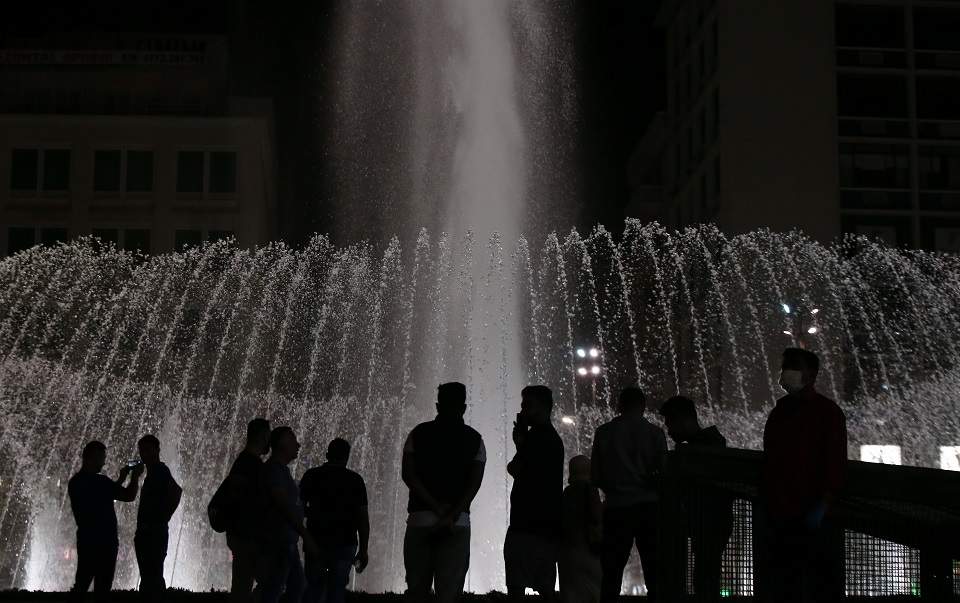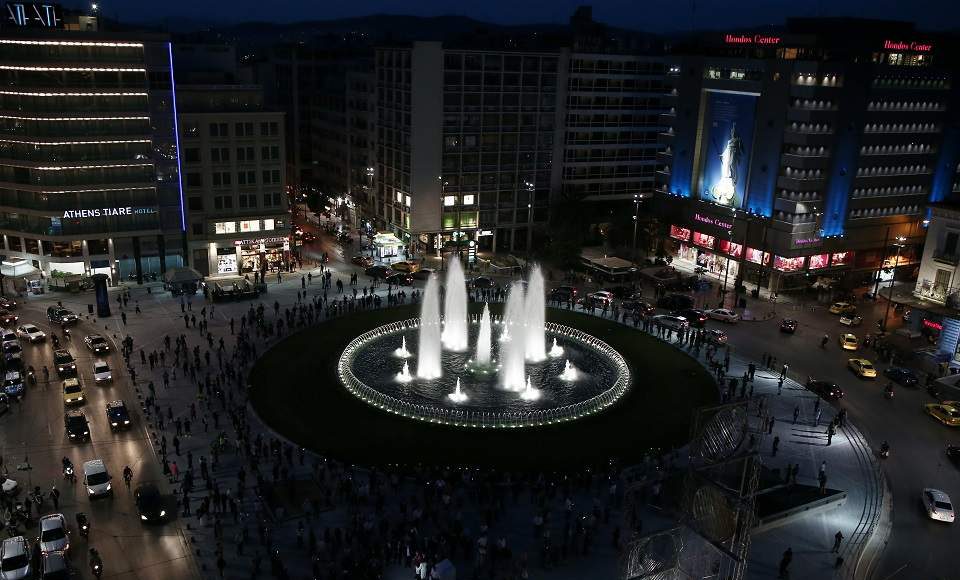Hundreds of people cautiously gathered at downtown Omonia on Thursday night for the unveiling of its new fountain by Athens Mayor Kostas Bakoyannis.
The unveiling of the new square was watched upon with awe and admiration as residents of the capital stopped their cars and motorcycles to watch the fountain being switched on. The new development comes as Greece starts to lift lockdown restrictions imposed in March to contain the spread of the coronavirus.
In a speech at the unveiling, Bakoyannis hailed the fountain’s innovative and ecologically friendly design, saying that it uses a fraction of the water used by conventional fountains and is also energy efficient.

The square was announced to be revamped shortly after the new mayor took over at the municipal authority last year.
Apart from improving the appearance of one of the more rundown parts of central Athens, the mayor added that the new square will also be “an oasis of cool.”
The square has undergone multiple transformations throughout the years. The square was originally named Plateia Anaktoron (Palace Square) when it was first constructed in 1846. It’s name was changed to Omonoia in 1862 because it was the site where leaders of the opposing political factions gave their Oath of Peace (omonia, in Greek).
“We made a mistake”
The Athens Mayor on Friday responded to criticism over scenes of over-crowding at Thursday’s unveiling of the new fountain on downtown Omonia Square.
“We made a mistake,” Bakoyannis said in a video post on Facebook, standing in front of the new fountain.
“We made a very big mistake because we did not predict that when the new Omonia was opened, when thousands of people pass through there every day, many people would reasonably gather spontaneously,” he added.
Bakoyannis clarified that the municipal authority had not planned to make a big occasion of the square’s unveiling and that police were issuing constant recommendations for social distancing. The mayor recognised, however, that the situation did get out of hand, with the mayor not accounting for the large number of people who regularly pass through the area.

